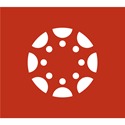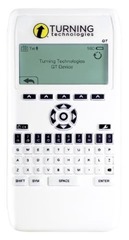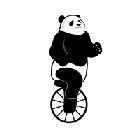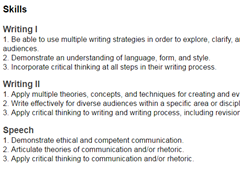You are currently browsing the category archive for the ‘Communication’ category.
 Students and instructors share the complex challenge of managing the elements of multiple courses simultaneously.
Students and instructors share the complex challenge of managing the elements of multiple courses simultaneously.
Solutions to that daunting task just became more reliable and perhaps easier with the Learn@OregonState ecosystem and website—http://learn.oregonstate.edu.
The power of this concept flows from the unification of OSU’s teaching and learning technologies to provide seamless access and dedicated support university wide.
This growing learning ecosystem currently consists of Canvas, Kaltura, Turning clickers, Turnitin and online content from publishers.
Three key attributes of tools in the Learn@OregonState ecosystem are:
1) They are available to every member of the OSU community via ONID authentication.
2) The applications are interoperable to multiply their power.
3) The tools are centrally supported for all users.
The result of this is organic management strategy is more than a set of technologies, it is a framework for managing technological change and bringing new tools into the system.
In order to understand the dynamics of OSU’s learning ecosystem I spoke with Lynn Greenough, Associate Director of Learning Platform Services.
Greenough managed the transition from Blackboard to Canvas in 2015 and works for Academic Technology in Information Services.
She made clear that supporting student success is her top priority; “Without students there is no Learn@OregonState. We know the world they are preparing for requires ever-changing skills, and our goal is to ensure that OSU’s learning environment supports their academic goals.”
Greenough perceives success with technology for both students and instructors as being a function of quality; “not only knowing how to use the tools, but how to use them well.”
That is why the dedicated support aspect of Learn@OregonState is significant to instructors and students alike.
You may be aware of the applications that make up this learning ecosystem and it is important that you know how they fit together and where to go to improve your uses of them.
Canvas is a learning management system (LMS) that provides course-level tools for students and instructors including a class list, grade book, assignment uploads, online grading, online tests, communication tools, an  assignment calendar and numerous ways to share course content.
assignment calendar and numerous ways to share course content.
Students value having a single place to get key information for all of their courses, so I urge instructors to at least publish their syllabi in the appropriate Canvas courses.
OSU’s front-line Canvas expert is Tasha Biesinger who helps the teaching and learning community make the most of those capabilities – contact Tasha at –canvas@oregonstate.edu.
Kaltura is a media management system where instructors and students can upload video and audio into a streaming format for online viewing and listening, similar to YouTube.
 Kaltura provides more access controls than YouTube making it the appropriate option for identifiable student media.
Kaltura provides more access controls than YouTube making it the appropriate option for identifiable student media.
A great use of Kaltura is to use the Screen Capture tools to quickly create tutorials and commentaries.
Embedded video quizzes integrated with the Canvas grade book are a recent innovation in Kaltura.
Raul Burriel is the key support agent for Kaltura at OSU; get help and comment on Kaltura at – kaltura@oregonstate.edu.
Clickers are a means by which many instructors structure and credit in-class participation.
The Turning bundle, which students purchase at the Beaver Store, includes a remote device for participating in class and a four-year ResponseWare license allowing iPhone, Android and laptop to operate as the student remote.
Instructors interested in using clickers will receive equipment and quality training from Nargas Oskui – clickers@oregonstate.edu.
Before this website launched Fall 2016 the support resources for these tools were in several places; now they are collected in a single site, are presented with consistent style, and are kept up-to-date by the people who know the tools inside and out.
A critical feature of the new system is how change is managed. Greenough explains;
“We have an established process for reviewing and evaluating requests, which is posted on our web site: We look at the impact that a proposed addition will have on students and instructors, and also validate that new applications meet our standards for accessibility, data security and technical interoperability.”
All OSU members are positively encouraged to be active agents in of the growth of our learning ecosystem by sharing feedback and requests for new elements.
Lois Brooks, Vice Provost of Information Services, succinctly sums up the core principle of the instructional technology support strategy;
“We have had two major innovations in the last year; Learn@OregonState is our virtual ecosystem and the Learning Innovation Center is a state-of-the-art physical facility that allows active and engaged learning. What we are working to accomplish is excellent educational opportunities for our students whether they are in a physical or virtual space.”
Learn@OregonState is a contemporary sophisticated foundation for succeeding at the information side of teaching and learning at OSU.
 If you want to stand out in your career search and progression then it is important that employers know that you can read and write.
If you want to stand out in your career search and progression then it is important that employers know that you can read and write.
You should be reading books that are relevant in your career area or important generally and you should make sure that employers know that you are literate in this respect.
Your cover letter should have a “right now I am reading…” line with a title that matters to your career area and why you think it relevant.
Your resume should have a “significant books that I have read” section with titles that matter to your career area.
You should be conversant at job interviews about books that matter to your career area.
A top interview question is; “What important book have you read?” and they will expect you to tell them why you think it matters.
Do you know the 10 books that leaders in your career area consider important?
It is not hard to find that out and those who do so, and read the books, will have a distinct edge over less literate candidates.
Research the leaders on LinkedIn and look for their blogs. They will often tell you which books they are reading and consider important.
What better strategy to promote your career than by getting inside the head-spaces of the people that you want to work for?
Be warned that claiming books that you have not read is a quick ticket to embarrassment and disappointment.
This summer is an excellent time to cultivate your professional reading habit.
Here are two books on my summer reading list.
The Seventh Sense: Power, Fortune, and Survival in the Age of Networks, Joshua Cooper Ramo, Little, Brown and Company. In this book Cooper proposes a framework for interpreting large-scale and seemingly chaotic changes in the world. His framework is based on network analysis which he applies to finance, economics, politics, cultural conflicts, war and terrorism. Anyone who promises a new way of looking at the world gets my attention and this summer I’ll find out whether Cooper provides a usable paradigm. I’ll get back to you on that.
The 160-Character Solution: How Text Messaging and other Behavioral Strategies can Improve Education, Benjamin Castleman, Johns Hopkins University Press. Some people worry that text messaging and twitter indicate that shallow thinking is generally increasing. Castleman argues that effective uses of short messages lead to more focused meaning on the part of writers and increased self-regulation on the part of readers. Maybe I can use his ideas in my teaching.
Consider the reading one of the following recent books this summer:
But What If We’re Wrong?: Thinking About the Present As If It Were the Past, Chuck Klosterman, Blue Rider Press.
Blockchain Revolution: How the Technology Behind Bitcoin is Changing Money, Business, and the World, Don Tapscott, Portfolio.
Pinpoint: How GPS is Changing Technology, Culture, and Our Minds, Greg Milner, W. W. Norton & Company.
Throwing Rocks at the Google Bus: How Growth Became the Enemy of Prosperity, Douglas Rushkoff, Portfolio.
Seven Brief Lessons on Physics, Carlo Rovelli, Riverhead Books.
Sharing our Lives Online: Risks and Exposure in Social Media, David R. Brake, Palgrave Macmillan.
Using Technology, Building Democracy: Digital Campaigning and the Construction of Citizenship, Jessica Baldwin-Philippi, University Press.
Inside the Machine: Art and Invention in the Electronic Age, Megan Prelinger, W.W. Norton.
If none of these books catch your interest, I promise that with a bit of searching you will find some that do.
By choosing to read books that are relevant to your career area and by telling others what you learned from those books, you are presenting yourself as a literate member of that profession.
To put it conversely, if you were in charge of hiring someone, would you choose someone who is conversant in the current literature of the profession or someone who reads only what they are told to read and never talks about it?
That leads to the topic of sharing what you read with others; in particular others in your chosen profession.
Book reviews on social media are a strong way to demonstrate your literate intellect.
Goodreads is a social book review platform with 25 million members and can be linked to post your reviews to Facebook.
With these online connections you can make your professional literacy public and point employers to it.
Strong reviews are concise and identify specific aspects of a book while explaining why those aspects are significant.
A social book review is not intended to explain the whole book. Think of your book reviews as arguments that are intended to give evidence for whether someone should read the book or not.
If you need to prime your writing pump in order to write a review, consider Minimalist or Distraction-Free writing tools.
ZenPen is a prototypical online Minimalist writing site because you don’t even login, just start writing. Do not confuse it for the electronic cigarette with the same name.
FocusWriter is a program for Linux, Windows, and OS X that has plenty of features in the settings though they are hidden when you write.
Write! Is a distraction-free text editor with a “focus mode.”
Hemingway Editor started as a free online app and has morphed into a paid-for desktop application that is a minimalist interface with useful analysis and formatting features built in.
One does not need a computer to write; just a pad of paper or journal and pencil.
Keep those tools with your book so t hat you can note insights as you read.
hat you can note insights as you read.
My proposal is simple: find out what books matter in your future profession, read some of those books, write about what you read and make sure to promote what you read and write to prospective employers.
A with less effort than you put into a single course project you can make your professional literacy into a key asset for finding a job in your career area and moving steadily upward in that career.

Image Acknowledgements
Herkulaneischer_Meister_002.jpg
https://en.wikipedia.org/wiki/Female_education#/media/File:Herkulaneischer_Meister_002.jpg
books-1170768_960_720.jpg
https://pixabay.com/en/photos/old%20book/
036-letter-writing-correspondence-q90-300×160.jpg
http://www.fromoldbooks.org/Jefferis-SearchlightsOnHealth/pages/036-letter-writing-correspondence/
Goodreads_’g’_logo.jpg
https://commons.wikimedia.org/wiki/File:Goodreads_%27g%27_logo.jpg
writing-hand-1443450574xaT.jpg
http://www.publicdomainpictures.net/hledej.php?hleda=writing
This morning my bleary eyes focused on the top email in my inbox with the subject; “Immediate Action: Your Mailbox Size Notification.”
The email was simple and to the point.
“Your email account has used 23.7 GB (95%) of 25 GB.
You will be unable to send and receive messages if you do not reset your account storage space to a higher limit.
Click the link to reset and validate your account.
This is a phishing attack and if I took the bait by clicking on the link, I could compromise my identity, my money and my data.
Phishing is the use of fraudulent messages disguised as coming from legitimate entities to acquire privileged information.
Phishing exploits trust, worry, and desire to trick people into giving up their up their sensitive credentials such as passwords and credit accounts.
A grim finding from an Intel Security survey shows that 97% of people globally are unable to identify phishing emails. Now that is scary.
The most powerful tool for computer hacking is social engineering which is the larger category of human manipulation into which phishing falls and there are numerous sub-categories of phishing.
Spear Phishing is targeted at specific individuals or groups and may contain familiar graphics and Web addresses to trick you.
Whaling is like spear phishing but aims at very large fish, such as a university president or corporate vice president.
Clone Phishing reuses a legitimate email and modifies it to contain the malicious url.
False Friend is email from someone that you know whose contacts have been hacked or spoofed and used to generate phishy emails.
Tab Nabbing exploits Web browser tabs to open a tab to a fake page.
Evil Twins are bogus wireless networks that mimic public networks in airports, libraries, coffee shop, and hotels in order to harvest credit cards and other personal information.
Phishing and social engineering are confidence games or confidence tricks and  can also occur in text messages, phone calls, Web pages, social media posts, Skype calls and snail mail. Confidence games are very old; read the Iliad for some prototypical instances.
can also occur in text messages, phone calls, Web pages, social media posts, Skype calls and snail mail. Confidence games are very old; read the Iliad for some prototypical instances.
Given that phishing is based in deception and some of the fakes are very convincing, how may time-stressed individuals such as yourself protect against the ruses? The solution comes in two parts: know what to look for and alter your online habits accordingly.
In his book The PrinceThe Prince Machiavelli gave advice that rings true when protecting oneself against phishing; be like the fox and the lion, the fox to discover the traps, the lion to frighten the wolves – be both smart and strong.
Here are some clues to watch for in order to detect predatory messages.
Asks for too much: computer system administrators never require your username, password, credit card or social security number. Even if sensitive information is needed online or by voice you are better off taking an alternate path to double-check the source.
Mismatched links: Don’t click on email links, but do examine them by mousing-over and you will see that phishing emails include linked text that is different from the Web address linked to.
You did not ask for it: a warning, threat or offer comes to you without you having initiated the contact – beware.
Threats and promises: fear, greed and pride are the nuts and bolts of confidence games and when you detect those elements in a message your phishy antennae should perk right up.
Poorly constructed: some phishing messages are expert but most are barely literate and would end up in the reject folder at crappypasta.com. You should know enough to reject them as well. This is one reason why advanced literacy is a practical part of your education.
“97% of people globally are unable to identify phishing emails.”
Cultivate smart habits to protect yourself against predatory messages (see my earlier columns for techniques of habit change) including the following practices.
Slow Down: most phishing threats can be disarmed by separating action from feeling. Phishers rely upon the impulsive actions of their victims and so when an email or related message gives you feelings of urgency, take that as a sign that you need to step away from the mouse and give clarity time to emerge. Much of what feels like an emergency in life – for instance a midterm – is not as big as it seems.
Analyze before evaluating: Judging something as bad, dangerous, desirable or important are evaluations that will benefit from analysis. Learning to discern the relevant facts of situation before evaluating those facts is a fundamental critical thinking skill that will save you from confidence games. It is like looking both ways (analysis) before crossing the street (judgment).
Research the claims: What is the message seeking from you? What does it claim to be? What evidence do you have for these claims? A great way to check any message for phishing is to copy the message text and paste it into a Google search. It took me less than ten seconds to do so with the email that I receive this morning (see above) and my search returned hundreds of posts identifying the fraud. This method directs analysis to a safe and useful action.
Never link from an email: Once when I was little I put my finger in a stapler just to see what would happen. Once I clicked on a link in an email just to see what would happen. I have not done either of those things ever again.
Never reply with personal information: Todd Davis is CEO of Lifelock, a personal identity protection company. To promote his product Davis give out his social security number on television and the Web claiming that Lifelock will prevent identity theft. Within months his identity was compromised 13 times including fraudulent loans, credit cards, and gift basket purchases. Don’t be like Davis and do not give out your social security number, passwords, credit card information, and other personal information unless you are very sure about whom you are giving it to.
Be network selective: be very careful about using personal information on public networks such as coffee shops and airports because you may expose it to an evil twin or wifi sniffer.
Do not reply at all to suspects: do not reply to phishing or spam messages because even selecting the unsubscribe link will verify your email address and invite more malicious attacks.
Use your junk mail, spam filters and security programs: get familiar with your self-defense tools and use them effectively. Look into Google Safe Browsing for Chrome and Firefox. The OSU Computer Walk-Up Help Desk in the Valley Library and the OSU Computer Help Desk at 541-737-3474 will help you become an internet ninja.
your self-defense tools and use them effectively. Look into Google Safe Browsing for Chrome and Firefox. The OSU Computer Walk-Up Help Desk in the Valley Library and the OSU Computer Help Desk at 541-737-3474 will help you become an internet ninja.
Report phishing: the OSU Helpdesk has a feedback form by which you may report phishing messages. See jondorbolo.com for resource links. Reporting helps the community address phishing and makes you more aware because you become an active participant.
Stay informed: security specialists like McAfee Labs, Symantec and Norton are reliable sources for phishing threats and defensive strategies. Being aware of the threat environment and current protective measures is a source of personal power. OSU Computer Helpdesk has extensive online resources on Phishing including effective breakdowns of actual examples plus no-cost security software and help in using it.
Don’t be paranoid: be smart and safe but please do not let this information make you more fearful or cynical. With reason, knowledge and habit adjustment you can be cyber-secure. The key to a better life is learning to see a better world.
For more depth on phishing and other malicious hacking phenomena consider two sources which I drew from for this column.
Phishing Dark Waters, Christopher Hadnagy (2015, Wiley).
The Art of Deception, Kevin Mitnick (2007, Wiley).
Please send your experiences with phishing to me at drtech@oregonstate.edu.
Image Acknowledgements
Spear-Phishing.jpeg
https://blog.knowbe4.com/tech-firm-ubiquity-suffers-46m-cyberheist
4894714911_42f0f50f72.jpeg
https://www.flickr.com/photos/35484468@N07/4894714911
c7bc35f579799a5973f2b66937bcd3af.jpeg
http://www.amazon.com/The-Prince-Dover-Thrift-Editions/dp/0486272745
7557181168_91f4af2d99_b.jpeg
https://www.flickr.com/photos/61423903@N06/7557181168
 The Turning clicker system is currently a source of irritation to OSU students and faculty alike.
The Turning clicker system is currently a source of irritation to OSU students and faculty alike.
In this column I will consider what the problem is, what solutions are being pursued and what you can do to succeed with your clicker this term.
What are clickers?
In Fall 2015 approximately 12,000 students are using the Turning clicker system in 77 course sections.
The Turning clicker system consists on the student side of a physical remote, ResponseWare iOS and Android apps, a web clicker for browsers at rwpoll.com and a licensed Turning Cloud account.
On the instructor’s side is a USB receiver and the TurningPoint software.
What holds all of this together is the Turning License. Think of the license like the data plan for your smartphone. The phone will not work without a data plan and your clicker system will not fully work without a license.
In Fall 2015 the Beaver Store began selling the QT remote which replaces and costs the same as last year’s NXT bundle.
Costs to students are contained by not raising them when the tools upgrade.
The updated system works with the NXT so that students who own a clicker from previous years do not need to buy a QT.
Costs to students are contained by designed backwards compatibility thus limiting new required purchases.
What is the problem with the clickers?
The problem with the clickers is that many students are having difficulty registering their system such that their name and the device ID are paired.
This problem is due to several factors.
One factor is the transition from Blackboard to Canvas which produced the need to connect accounts to both; the departure of Blackboard from OSU this term will simplify that matter.
Another factor is the existence of three ONID email address for each OSU member: @oregonstate.edu, @onid.oregonstate.edu, @onid.orst.edu.
Most of the student registration troubles that I encounter involve a combination of email logins for multiple Turning Cloud accounts.
Add to these factors Turning’s move to a cloud-based system with some design flaws and the variations proliferate faster than fruit-flies in a compost bin.
85% of OSU students in clicker-using courses this Fall are correctly registered so that their names and clicker device IDs are paired in Canvas.
Consequently, 15% of this term’s students – about 2,000 people – are not completely registered as of week three.
Being completely registered means that you have a Turning Cloud account that is linked to Canvas and contains a redeemed license and a valid device ID.
The most important point I have to convey is that the Turning clicker system saves your participation points 100% of the time.
I will not tolerate a system that loses points of students who use it correctly.
Even if you are in a registration snarl, every time you use your clicker and get a check mark symbol, your responses are received and saved.
The TAC plan is to get every student registered and then go course by course, file by file to retrieve and post every participation point for every student.
You have my word on that and if you feel that your participation points are not being properly credited, please come see me and we go after it with a passion.
All of the instructors who use clickers are aware of these facts and co-operate fully in crediting the legitimate participation points of students.
You also have my humble apology for the confusion and irritation related to our clicker system.
To wit, see for the video of me being soaked with ice water in freezing weather as penance for this unfortunate situation.
What is being done to fix this problem?
I take responsibility for leading us to a clicker registration solution for future terms.
I am working with Turning and Canvas to guide development of a direct and logical integration between the two  that supports a three-step registration process such as is common to many web applications.
that supports a three-step registration process such as is common to many web applications.
The critical objective is to eliminate false-positives so that students do not believe that they are correctly registered when they actually have incomplete accounts.
Basically I plan to banish incomplete clicker accounts to the bowels of hades so that students get one of two outcomes: “that worked, congratulations” or “that did not work, go get help.”
Verily I say unto you, this strategy will result in a 98% successful registration rate before the end of week two in a term.
Moreover I am seeking to normalize clicker ownership so that incoming students receive their fully registered clicker bundle at START in the Summer.
I’d like to add unicorns and rainbows to this plan, but for the coming academic year a completely reliable and hassle-free clicker registration system will suffice.
What can I do to solve my clicker issues now?
Visit the TAC Clicker Registration Station in the lobby outside of LINC100 from 10-2 M-F.
Many students have more than one Turning account – often one linked to Blackboard and another to Canvas.
I suggest that you check each of the ONID email addresses – @oregonstate.edu, @onid.oregonstate.edu, @onid.orst.edu – at the Turning Account login; go through Canvas to find it.
Use the password retrieval to see if the account for that login exists and to determine whether you have a stealth account.
If you do have multiple accounts, check to see which one has a redeemed license and whether it is linked to Blackboard or Canvas.
Often the solution is to link Canvas to the licensed account by selecting the Turning link in Canvas and logging into Turning.
If you reset your password the Canvas link is broken but you only need connect from within Canvas again and login to restore it.
In the Dashboard “http://oregonstate.turningtechnologies.com” shows a Canvas connection.
In the Dashboard “http://my.oregonstate.edu” shows a Blackboard connection.
If you are in any doubt, come see us at the Clicker Registration Station in the lobby outside of LINC100 from 10-2 M-F or write to clickers@oregonstate.edu.
My clicker crew colleagues and I agree that OSU students are among the most patient and civil people on the planet.
In tribute to your excellence we are holding a raffle with Turning Technologies support.
Prizes are Beaver Store gift certificates in denominations of ten $10, five $25, two $50, and one $100.
Winners will be drawn from all OSU students with fully registered Turning clicker accounts and announced in a future Dr. Tech column.
Please come to TAC’s Clicker Station in the LINC first floor lobby M-F 10-2 for assistance and write to me with your thoughts on clickers and anything at all: drtech@oregonstate.edu.
 A campus full of Beavers makes my heart glad. If you have returned, welcome home. If you are new to OSU, we are so glad that you have joined this community.
A campus full of Beavers makes my heart glad. If you have returned, welcome home. If you are new to OSU, we are so glad that you have joined this community.
I am Dr. Tech and this weekly column covers issues in technology that are important to OSU members and maybe of interest to you; students, staff and faculty. Write to me anytime with questions and ideas to investigate and address; drtech@oregonstate.edu.
“All students with clickers completely and correctly registered by Friday 10.09 5:00 p.m. PST will be entered into the raffle and the winners will be announced in this column on the following Wednesday.”
Learning Innovation Center (LINC)
The big news this term is the Learning Innovation Center (LINC). This astonishing facility seats up to 2,300 students in 15 classrooms of widely diverse styles.
The unique design of the building, classrooms in the center with perimeter walkways, provides 600 study and collaboration spaces on all 4 floors. Conversations with students consistently identified the need for more informal learning space and now you have it.
 Some of the class rooms such as the in-the-round spaces are totally unique to OSU.
Some of the class rooms such as the in-the-round spaces are totally unique to OSU.
Technology Across the Curriculum (TAC), The Center for Teaching and Learning (CTL), and Boora Architects have launched a study of these spaces titled “The Geometry of Learning.”
This study is a research framework initially seeking to measure seating choices by students in order to correlate location to learning outcomes.
We also aim to map the social networks of learning spaces by following seat choices over time.
This research is original and has potential for discovering how to design learning spaces for optimal learner performance.
This research is supported by Academic Affairs and Information Services.
Thousands of students have consented to participate in the research and if you are among them, we appreciate your foresight.
Fourth floor LINC is home to the Honors College and the Integrated Learning Resource Center (ILRC) which brings together the units of Academic Technology (AT) and CTL. My office is there if you ever have time to stop in to say “hi.”
Clickers
There is a new Turning remote in town, the QT, sold in the Beaver Store as OSU’s clicker solution.
The QT has a qwerty keyboard which makes it equivalent to the ResponseWare mobile device clicker interface.
The QT bundle costs the same as last year’s NXT clicker and no new costs are added to clicker-using students.
Please note that students who own a NXT from previous years are fully supported and do not need to buy a new clicker.
Students who registered an NXT in 2014-5 (last year) do not need to register again. Students who own a new QT must register the device and their license.
Registration licenses your QT and apps which are downloadable at no cost from the Apple Store and Google Play, as well as the web service at rwpoll.com. All of these will work as a clicker if your instructor enables the ResponseWare.
Check your course syllabus for the ResponseWare Session ID because some instructors choose not to enable ResponseWare for mobile devices.
TAC’s Clicker Registration Station is located outside of LINC100 Monday through Friday in week one for everyone who needs to register their clicker or wants to check on it.
The Turning clicker system at OSU is part of a comprehensive strategy intended to steadily increase learning/teaching power while containing and reducing costs to students. I will cover details of this strategy in columns to come.
How about a raffle contest for the quickest classes to register? Some of you may remember last year when I took the ice bucket challenge in December to promote clicker registration. Now TAC with support from Turning Technologies is launching a raffle to encourage fast and total clicker registrations by classes. The prizes are Beaver Store gift certificates in the following amounts and denominations:
10x$10
4x$25
2x$50
1x$100
All students with clickers completely and correctly registered by Friday 10.09 5:00 p.m. PST will be entered into the raffle and the winners will be announced in this column on the following Wednesday. To qualify you need to be an Oregon State University student and have a Turning NXT or QT remote with a redeemed license, which is listed as a participant in the Canvas system. TAC will randomly select Beaver Store gift certificate winners from the active participants listed in Canvas. Winners will be contacted by ONID mail. Certificated unclaimed four weeks will be awarded to an alternate student. Send your questions about this F15 raffle to Jon.Dorbolo@oregonstate.edu.
Canvas
Fall 2015 is the last term for Blackboard at OSU and Canvas is performing well as a strong successor.
Three new features are available in Canvas: Studio Sites, Turnitin, and Canvas Commons.
Studio Sites enables OSU members to create Canvas areas for non-course uses such as student clubs and department resources.
Turnitin is a text pattern-matching tool that may flag different kinds of plagiarism and inappropriate reuse. Instructors must inform students that Turnitin will be used on course assignments, preferably in the syllabus. The tool may be used to let students check their drafts for pattern matches before submitting an assignment, which turns Turnitin into a learning tool.
Canvas Commons facilitates sharing of selected course content among instructors both locally and globally.
Office365
Every OSU student gets Microsoft Office365 for use on 5 devices at no cost. Download yours at oregonstate.edu/office365
Walkup Computer Help Desk
No one could ask for better technical support than available to OSU students at the OSU Computer Walk-Up Helpdesk on main floor of Valley Library. There is not enough room on this whole page to list all of the services that they provide, so check my blog for links.
Game On!
“Dr. Tech’s Top Ten Technologies Countdown” is an interactive live game show  that uses clickers and student’s brains to compete for knowledge and prizes. Three sessions of the game are reserved for U-Engage first year students and other sessions will be open to the collective Beaver colony. This game and yours truly will be featured at the upcoming Unizin Summit conference.
that uses clickers and student’s brains to compete for knowledge and prizes. Three sessions of the game are reserved for U-Engage first year students and other sessions will be open to the collective Beaver colony. This game and yours truly will be featured at the upcoming Unizin Summit conference.
My forecast is that F15 will be an action packed term with you being especially successful. I advise you to read “Ask Dr. Tech” weekly to stay sharp on the edge of tech.
Image Sources
beaver-46221_640.png
https://www.google.com/search?site=imghp&tbm=isch&q=beavers&tbs=sur:fmc#imgrc=9VCpr2lGN0kD8M%3A
canvas_panda.gif
Canvas
linc_parlament.jpg
Boora Architects
spin_game.jpg
c3softworks
 I hope to persuade you that your summer plans should include a strategy for creating at least one substantive product that demonstrates your skills.
I hope to persuade you that your summer plans should include a strategy for creating at least one substantive product that demonstrates your skills.
This matters because you will eventually be competing for a job, program or grant and those candidates who have demonstrated relevant skills shall prevail.
It is not hard to demonstrate a skill, but so few people do so that those who grasp its value will gain power.
Here is a formula for demonstrating your skills:
1. Identify a skill to promote
2. Do something that uses that skill
3. Produce a commentary on what you did,
4. Publish your commentary publicly
5. Refer employers and evaluators to your product.
To identify a promotable skill [step 1 of the formula] review the objectives of what you have already accomplished and find out what your potential audience values.
All of the courses and programs that you have completed have performance objectives stated in the syllabi or other descriptive documents.
objectives stated in the syllabi or other descriptive documents.
A strong way to prepare an account of your abilities is to review the performance objectives that you have met and write a paragraph expressing the specific knowledge or action that fulfills each objective.
I put each learning objective for the courses that I take (I am pursuing a MA in Psychology) on an index card at the start of the term, then write a statement of specific knowledge that fulfills the objective on each card at the end of the course.
Employers and evaluators tell us what they value and you should pay attention to what they are saying.
Read “The Six Critical Abilities Students Need for Success After College” in Forbes Magazine.
The employable skills listed in that article are; Think analytically, Express ideas effectively through written communication, Exchange ideas effectively through oral communication, Bring innovation to their work, Envisage and work independently on a project, Accept and act on criticism.
Read “IDC study reveals skills today’s students need to succeed in tomorrow’s unimagined world.”
When you look at a job application consider whether any of the parts asked for map to the skills identified by employers in these studies.
Acknowledging what you have accomplished, there is always more that you can do to validate a skill [step 2 of the formula] and the solutions are no further than your mobile phone.
Thousands of online courses, seminars, textbooks, eBooks and audio books are available for free or cheap.
Some of these are validated by universities such as Open Oregon State, MIT OpenCourseware, Stanford Online, and Merlot.
 I recommend that you take a look at “Adventures in Writing” from Stanford Online which is a series of lessons presented in graphic novel style that you can take for free.
I recommend that you take a look at “Adventures in Writing” from Stanford Online which is a series of lessons presented in graphic novel style that you can take for free.
I ask you, is “I succeeded in a writing course from Stanford” or “I completed a seminar taught by a Nobel Prize laureate at MIT” worth having in your cover letter?
Even better, all such offerings have performance objectives so that you may map your skills back to what employers are seeking.
Open Culture is a massive repository of free online learning resources.
Even a little bit of computer programming knowledge is valuable in the job market and even the most non-technical of us can gain such knowledge at Khan Academy an Code Academy.
I am not suggesting that you pursue C++ coding, but that a truthful statement such as “mastered the basics of writing macros in Word in this certified tutorial” or “over summer break I learned Javascript which I applied to the website at…”
While you are learning something you may as well turn it into evidence of your competence (step 3 of the formula) by writing a review of the course-book-article-video that you studied and post your review on a blog or a review site such as Goodreads.
With even a small repertoire of such publications (step 4 of the formula) you will have objective evidence of your skills in learning and communication to be references in resumes, cover letters, and applications.
Consider the following statements from two job applications:
“I have excellent communication and collaboration skills.”
“My communication skills are demonstrated by my book reviews at link and my collaboration skills are demonstrated in the report that I produced from a group project at link” [step 5 of the formula].
If you were an employer, which statement would invite you to take another look at the candidate?
If acting on this advice interests you, please send your thoughts and  outcomes to me at drtech@oregonstate.edu.
outcomes to me at drtech@oregonstate.edu.
I wish graduating seniors and all degree recipients luck in entering an amazing career; your path to excellence is just beginning.
Fare ye well and come back to us some times, because once a Beaver always a Beaver.
To you who will return in Fall, have a wonderful summer, plenty of fun, make sure you learn something and make it count for you.
Image Acknowledgements
Wenger_EvoGrip_S17.jpg
http://en.wikipedia.org/wiki/Swiss_Army_knife#/media/File:Wenger_EvoGrip_S17.JPG
14695-adventures_module.jpg
http://news.stanford.edu/news/2015/january/writing-adventures-illustrated-010815.html
image3.jpeg
http://www.thewisejobsearch.com/2010/07/filling-out-job-applications-why-and.html











 factor
factor




